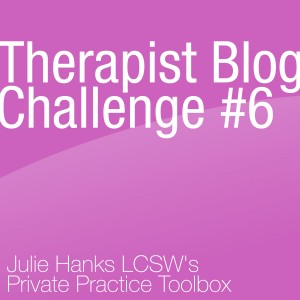I recently had the opportunity to interview Nicole Bonsol, a writing, branding, and graphic designer for healers. She helps therapists create an inviting and powerful website and best craft their message to engage with their viewers. I was fascinated at what Nicole had to say, especially because of her unique role in the process of helping clinicians reach their audience. Here are some highlights of our discussion:
My Top Social Media Management Tools
Get organized with these social media management tools. Post to multiple platforms from a single dashboard.
Social media is an important part of building a strong online practice presence, but it can sometimes be a pain to manage. You need to get fresh content out there on a regular basis, but it can be difficult to keep up. Thankfully, there are programs to help you schedule your posts, so you can get . Here are my two favorites:
Hootsuite
Hootsuite is a management system that you connect to your Twitter, Facebook, Google+, Wordpress, and Instagram (and others) to schedule when your posts go live. That means that you can plan ahead by writing your content beforehand, then use the system to schedule what date and time the messages will be posted. Hootsuite is free up to the first 3 social networks, then offers upgrade options if you want to include more.
Another great feature of Hootsuite that is often under-utilized is its analytics section. This allows you to see how well your social media is doing by tracking how many people are reading your posts. Each upgraded version of Hootsuite offers progressively more detailed reports so you can measure your social outreach.
SocialOomph
Socialoomph is similar to Hootsuite in that it allows you to schedule posts and analyze your results, but it takes it a step further by giving you tools to interact with your social media followers. With this system, you can automatically follow those who follow you. This is important because it demonstrates that you are engaging with your readers, which makes you more accessible and engaged with your online followers. Another way this system can help you is by shortening the URL (web address) of a link you may choose to include in your content. This cleans up the appearance of your status and also may be necessary if you use networks like Twitter, which only allows 140 characters.
The upgraded version of Socialoomph gives you even more features, such as an automatic analysis of key words and phrases that appear in your content that allows you to find other social media users with similar content. This lets you connect with other experts in the field and also helps you find potential clients.
Another benefit of Socialoomph is the ability to schedule recurring tweets/post every few hours, days, weeks, etc. with up to 3 variations of rotating texts. This is helpful for automating Twitter posts. For example, I'll set a favorite inspirational quote to tweet every 12 weeks.
How do you stay on top of your social media?
Could these tools help you get organized?
Therapist Blog Challenge #6: Embed a Favorite YouTube Video

Commenting on expert YouTube videos can make for a quick and meaningful blog post that lets potential clients know more about you and provides them with helpful information.
While your blog posts may be a way of sharing your unique perspective, you can use existing content as a springboard for meaningful content. Blog posts don't have to be entirely original material. One way to do that is to share your favorite YouTube video with your blog readers and potential clients.
Many experts, researchers, and psychology gurus have YouTube videos or channels. Find one that speaks to you and is relevant to your ideal client. Summarize why the video speaks to you and how the information will be helpful to your ideal client. Then embed their video on your own blog post. Easy, right?
How to embed a YouTube video into your blog post
- Underneath the YouTube video there are several links.
- Click on the "share" link.
- Then click on "embed" option.
- A box will open that has the code needed to embed the video on your site. Copy this code and paste it into your blog post.
- If you're totally lost here then contact your webmaster for help.
Here are a few of my favorite videos. Feel free to use these or find your own.
Additional reminders about the 2013 blog challenge
- Write and post your blog article in the next 2 weeks. If you miss the deadline or you read this article months later, that’s OK too.
- Post a link for this blog challenge in the comment section of this blog post.
- Read, comment, and share other therapist’s articles.
- Tweet your post using hashtag #therapistblog and tag @julie_hanks so I can retweet it.
- Pin it on the challenge Pinterest Board. I’ve invited everyone who posted a comment on the initial blog challenge post as collaborators so you can pin onto the group board.
- Spread the word and invite mental health colleagues to join the challenge. Articles can be added anytime throughout the year.
- Write no more than 600 words, make it easy to read, use a conversational tone, and gear your articles toward your ideal client (not other professionals).
- The goal of a professional blog is to provide value to your website visitors, help them get to know your professional perspective, increase traffic to your private practice website, and build your practice.
Overcoming Blogophobia (part 2): Quick and Easy Blog Post Ideas
 Are you a beginning blogger feeling overwhelmed by the thought of coming up with original content to write about on a regular basis? I have some good news for you! Much of what is posted online is not entirely original content. Braden Talbot posted this insightful comment on my post 5 Tips To Overcoming blogophobia.
Are you a beginning blogger feeling overwhelmed by the thought of coming up with original content to write about on a regular basis? I have some good news for you! Much of what is posted online is not entirely original content. Braden Talbot posted this insightful comment on my post 5 Tips To Overcoming blogophobia.
Once you understand that 99% (if not 100%) of information [posted on blogs] isn't really new, it’s not so scary.The new part is your story and your spin and you’d be amazed at how many people are interested to hear it.
Adding your perspective on existing information makes blogging less overwhelming. I'm not talking about plagiarism here. I'm talking about using other people's ideas, books, posts, videos as a springboard to sharing your perspective on a particular topic. Remember, always credit the original author you are citing and provide links to the original work.
Here are some easy blog content ideas and examples to help spark your creativity, help you overcome "blogophobia", and add blogging to your private practice marketing strategy.
1) Share a video
Embed or share a video link that explains or expands on some aspect of your therapy work, your philosophy, or approach. Pick one of your favorite psychology "gurus" and write a brief paragraph about how this model or theory informs your clinical work. Here's a video from a brilliant psychologist who has revolutionized couples therapy that I recently shared on my clinic blog.
What is a healthy marriage? video by Dr. Sue Johnson
2) Bulleted or numbered lists
Give quick nuggets of advice or recommend resources that speak to your ideal client in a bulleted or numbered list. For example -- Top 5 parenting books, 6 ways to survive new parenthood, 5 things never to say to your teen, or 10 tips for managing depression. Here's a great post in this style from PsychCentral's Therese J Borchard.
5 Ways to Silence Your Inner Critic By Therese J. Borchard
3) Summarize relevant research
Watch for new and interesting research studies, summarize the research, and share why it's relevant to your practice. Here's a recent example of a research summary post from PsychCentral News.
Attention Problems Limit School Success By Rick Nauert PhD
4) Q & A
Solicit questions on social media sites, on your website, or make up the question based on commonly asked questions or themes drawn from your clinical practice and provide answers. This fun and informative style provides practical information and tools for potential clients and helps them understand your therapy style and philosophy.
For the past 10 years I've been unhappy By Dr. Marie Hartwell-Walker
6) Current events
Regularly visit a local or national news websites and select a top news story to use as a springboard for your blog post topic. Hurricane Irene could lead to a post on helping your family deal with natural disasters, for example. Here's a recent post by one of my colleagues at Wasatch Family Therapy inspired by the 10th anniversary of 9-11.
How to talk to young children about 9-11 By Clair Mellenthin, LCSW
7) Seasonal topics
Consider the time of year and blog about seasonal topics. If you work with families, back to school time could lead to a post about helping your child with attention problems transition back into a routine. If you work with mood disordered clients you could blog in December about surviving the post holiday let down. You get the idea. Here's an example of one of my blog posts that I posted during spring.
"Emotional" Spring Cleaning by Julie Hanks, LCSW
Now that you have tools to overcome "blogophobia", and some blog post ideas, I want to read them! Feel free to post comments, concerns, questions, and your own blog post links below. Happy blogging.



As healers, we genuinely like to do our work. Guiding clients through the therapy process and seeing them make progress is why we do what we do. But if you're in private practice, you know there's a lot going on in the back end and that it's crucial to run an efficient and organized business.